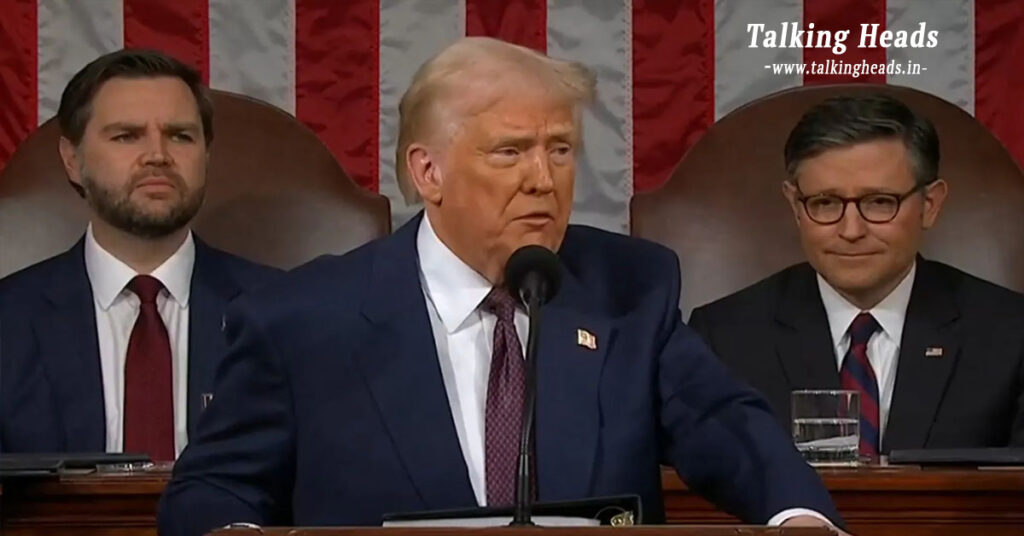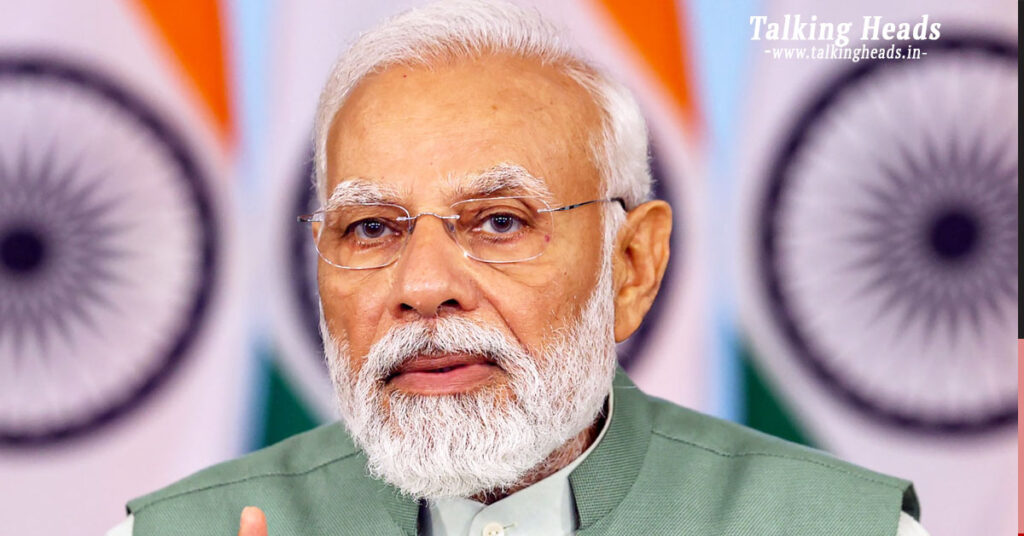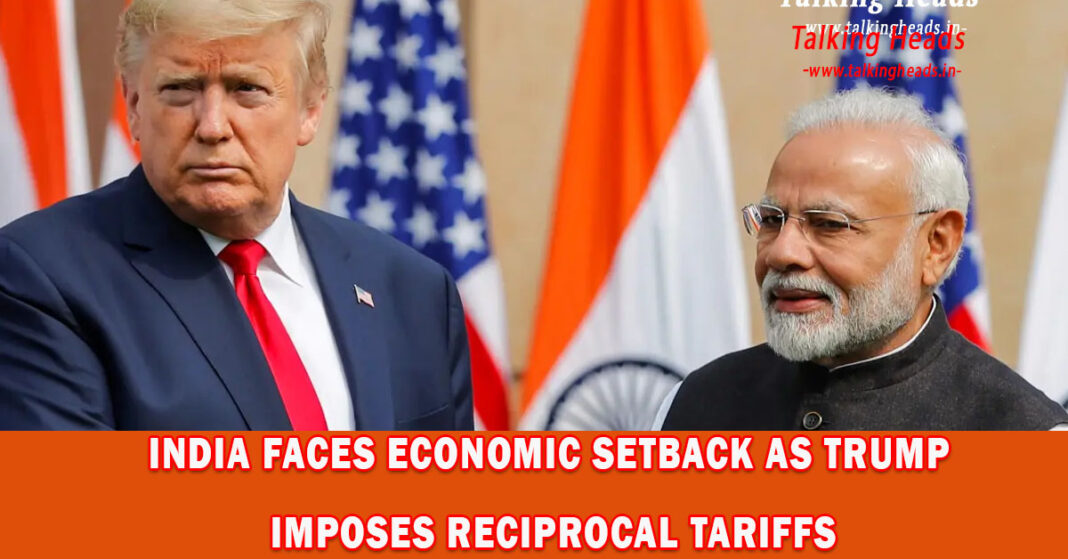How Trump’s New Tariffs Will Affect India and the US Trade Relationship
The United States, starting from April 2, 2025, will charge a reciprocal tariff on Indian products, i.e., whatever rate of tariff India imposes on American products will be matched by the US on Indian goods. This was announced by President Donald Trump in his address to the US Congress on March 5, 2025. With tariffs increasing between the two countries, there are questions regarding the economic effect on both countries, particularly India, and whether American products will be cheaper as a consequence.
Table of Contents
Why is Trump Imposing These Tariffs?
Tariffs have been a pillar of President Trump’s economic policy. The primary objective of the tariffs is to stimulate American manufacturing, employ Americans, and generate revenue for the government, thereby injecting stimulus into the US economy. Trump has repeatedly asserted that increased tariffs will shrink the trade deficit and repatriate jobs to the United States.

In 2024, the United States experienced a significant trade deficit with its major trading partners. More than 40% of US imports consisted of China, Mexico, and Canada, to which China by itself contributed the trade deficit worth 30.2%. The American administration is now concentrating on minimizing this imbalance that had touched a whopping $670 billion (approximately Rs 40 lakh crore) in 2023. In a move to contain such deficits, America has already slapped tariffs on Mexico, Canada, and China, and now India is the next one to face reciprocal tariffs from April onwards.
The Economic Impact of Tariffs on the US: A Case Study
To realize the justification of the tariffs, take the example of Harley-Davidson motorcycles. The tariff for Indian-made motorcycles in the US is 100%, whereas the tariff for cars shipped from India to the US is comparatively much lower. This difference causes two major losses to the US:

1. Restricted Growth of American Business in India: The high tariff for American motorcycles makes US firms hesitant to expand their operations in India, restricting possible growth.
2. Slowing Down Trade Growth: The disparity in tariffs retards trade growth, and the US economy will therefore grow less rapidly than otherwise.
What Effect Will Reciprocal Tariffs Have on India?
The implementation of reciprocal tariffs will pose several challenges to India, which can result in the increase in the price of Indian exports and substantial economic implications:
Higher Price for Indian Exports: Indian items like food grains, clothing, electrical machinery, gems, jewellary; drugs, and automobiles will cost more in the American market. These products could become less competitive with the increased tariffs and might lose their market share in the US market for Indian companies.
Decrease in Trade Surplus: India is presently experiencing a trade surplus with the US due to the low tariffs imposed on Indian products. The imposition of reciprocal tariffs would undermine this benefit, and India’s trade surplus with the US would decrease.
Increased Imports from the US: In the attempt to ward off increased US tariffs, India can lower duties on US imports, making goods from America relatively cheaper in Indian markets. This would lead to a sharp upsurge of imports from America, further weakening India’s trade balance.
Rupee Depreciation: Rising imports from the US will increase the demand for US dollars, and that could make the Indian rupee depreciate. As the rupee becomes weaker, it means India will pay a higher import bill, that is, pay more for American goods.
Foreign Investment Boost: If India decides not to reduce tariffs, US businesses may try to boost their production in India to escape the higher tariffs. This may result in a boost in Foreign Direct Investment (FDI) from the US.
Economic Losses: As per business analysts, India’s export sector may lose up to $7 billion (around Rs 61,000 crore) every year because of the effect of Trump’s tariff increases.
Will American Products Be Cheaper in India?
In order to offset the US retaliatory taxes, India can reduce tariffs on American products. According to reports, India will lower the tariffs on over 30 products, and this will make American products cheaper in the Indian market. India can also up its American defense and energy imports to keep its trade terms favourable.
In the Indian budget, the government had already slashed import duties on various items like electronics, textile, and high-end motorbikes. Additional cuts in tariffs on high-end cars, solar panels, and chemicals are also being discussed in order to continue trade relations with the US.
Which Indian Industries Will Be Most Affected?
The US is a major trading partner of India, and merchandise valued at $42 billion (approximately Rs 3.6 lakh crore) was exported to India in 2024. Indian tariffs on US imports vary from 7% on wood and machinery to as much as 68% on foodstuffs. The US also charges tariffs on some Indian imports, such as a 5% tariff on farm products, which is very different from India’s 39% tariff on farm imports.

If the US retaliates with equal tariffs on farm commodities, Indian food and agricultural exports will suffer most. Although trade in agricultural commodities is small in quantity, the tariff difference is quite large, and the sector is susceptible to a rise in prices.
Navigating the Fallout of Reciprocal Tariffs
The tit-for-tat tariffs by the US from April 2, 2025, will surely have a spill-over effect on India’s economy. Indian goods will be more costly in the US, lessening trade surplus and possibly more imports from the US. The rupee can weaken, and Indian industries might find it hard to retain their market share in the US.
But India can try to counter these issues by lowering tariffs on US goods and boosting American purchases, especially in defence and energy. Ultimately, the full effect of these tariffs will be determined by how both nations modify their economic plans to cope with the changing trade environment.










